#zenobia of palmyra
Text







Women in History Month (insp) | Week 1: Leading Women
#historyedit#perioddramaedit#women in history#women in history month challenge#lady of birka#marie madeleine d'aiguillon#empress gongsheng#elizaveta petrovna#jayadevi#zenobia of palmyra#margrete of denmark#viking age#scandinavian history#french history#cambodian history#song dynasty#chinese history#russian empire#3rd century#7th century#8th century#10th century#14th century#15th century#16th century#17th century#18th century#my edits#mine
162 notes
·
View notes
Text

Zenobia's Last Look on Palmyra, Herbert Gustave Schmalz, 1888
#art#art history#Herbert Gustave Schmalz#historical painting#ancient history#Ancient Rome#Roman Empire#Zenobia#Zenobia of Palmyra#British art#English art#19th century art#Victorian period#Victorian art#Art Gallery of South Australia#oil on canvas
745 notes
·
View notes
Text
Of the women of the Third Century Crisis, Zenobia of Palmyra stands head and shoulders over everyone else:
Zenobia of Palmyra was the first Arab ruler of a large state that was noticed outside the Hijaz, and the precursor of the Ghassanid, Lakhmanid, and Himyarite states. The Nabateans, while an earlier form of Arab civilization, were more of a semi-nomadic culture with a quasi-state aspect that happily raided and looted civilization like the other barbarians east of the Rhine. Zenobia, by contrast, was a full-scale state ruler. For a time she led the third state in the period of Three Empires, but was ultimately bested by the Emperor Aurelian and brought to Rome after Palmyra's fall.
There is also one of history's characteristic ironies in the first great ruler of Arab history being a woman, given that pagan Arabia treated women much more poorly on the whole than Islam has ever done, and that these prejudices were deeply woven into the fabric of the older civilization....and yet it is one of these very women who first cracked the barrier of state formation.
#lightdancer comments on history#women's history month#roman empire#military anarchy#zenobia of palmyra#arab history#yes the first major Arab ruler of a state was a woman#why do you think ISIS tried to obliterate her memory?#because the modern Arabs cannot accept that the first Arab ruler was a woman
0 notes
Text

Queen Zenobia's last look upon Palmyra by Herbert Gustave Schmalz
#herbert gustave schmalz#art#zenobia#palmyra#empress#queen#septimia zenobia#palmyrene empire#syria#romans#roman#colony#aurelian#history#ancient#architecture
1K notes
·
View notes
Text

Zenobia - Queen of Palmyra, 1857
111 notes
·
View notes
Text
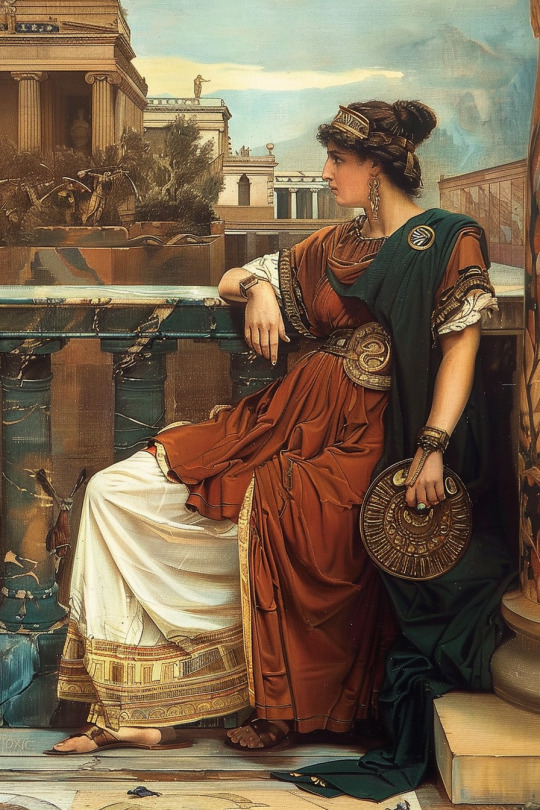
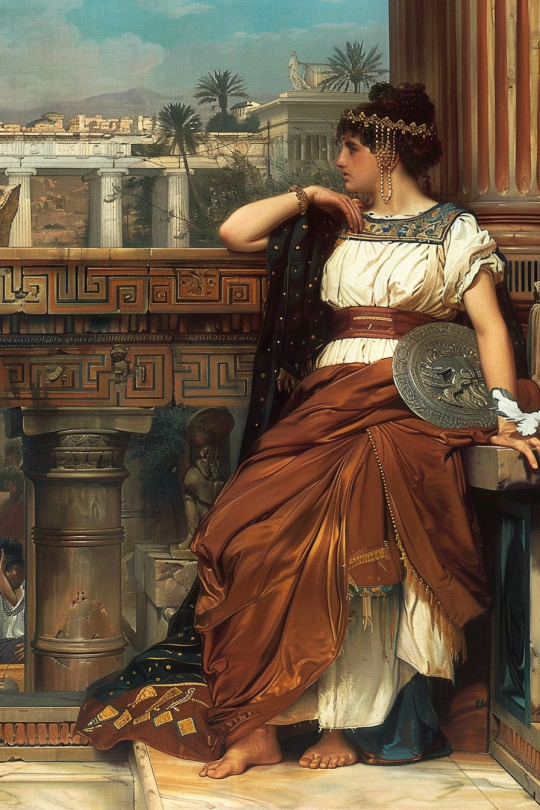
These are created from a blend of two pictures, one of which was a portrait of Zenobia, the ruler of Palmyra during the Roman period.
Midjourney v6
2 notes
·
View notes
Text

𝑳𝒂 ú𝒍𝒕𝒊𝒎𝒂 𝒎𝒊𝒓𝒂𝒅𝒂 𝒅𝒆 𝒁𝒆𝒏𝒐𝒃𝒊𝒂 𝒂 𝑷𝒂𝒍𝒎𝒊𝒓𝒂 (𝑯𝒆𝒓𝒃𝒆𝒓𝒕 𝑮𝒖𝒔𝒕𝒂𝒗𝒆 𝑺𝒄𝒉𝒎𝒂𝒍𝒛, 1888)
#arte#pintura#la última mirada de zenobia a palmira#herbert gustave schmalz#zenobia#palmira#1888#siglo xix#septimia zenobia#art#queen zenobia's last look upon palmyra#painting#artwork#19th century
2 notes
·
View notes
Text
Immediately realized I reblogged that felice post to the wrong blog but, honestly? everyone needs to hear the good word and also read 'The Pope's Daughter' by Caroline Murphy, one of the most biographer of all time
#text#i love her i love her i love her#my historical wives: felice della rovere zenobia of palmyra and suor maria celeste
1 note
·
View note
Text
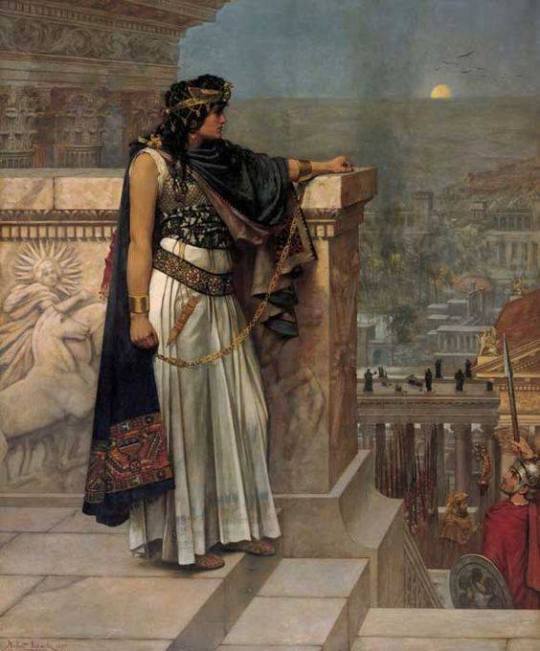
Queen Zenobia's Last Look upon Palmyra by Herbert Gustave Schmalz (1888) (Public Domain)
1 note
·
View note
Text
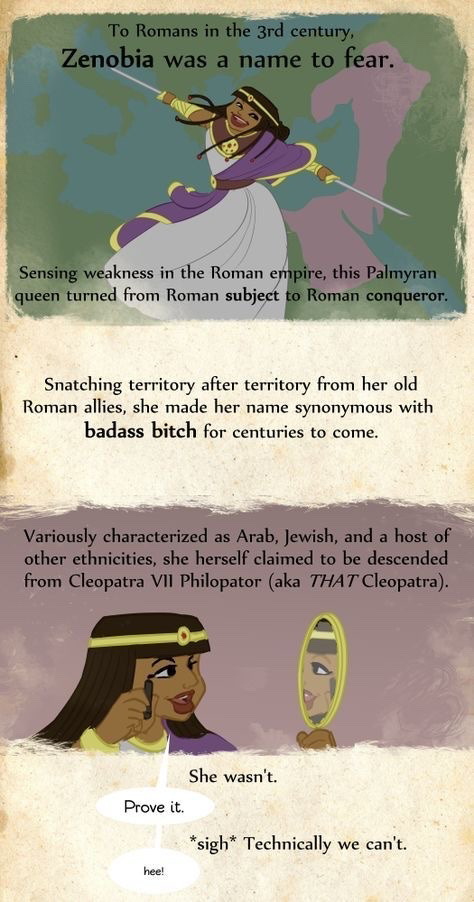
Zenobia if palmyra
1 note
·
View note
Text

Herbert Gustave Schmalz - Queen Zenobia's Last Look Upon Palmyra (1888)
388 notes
·
View notes
Photo

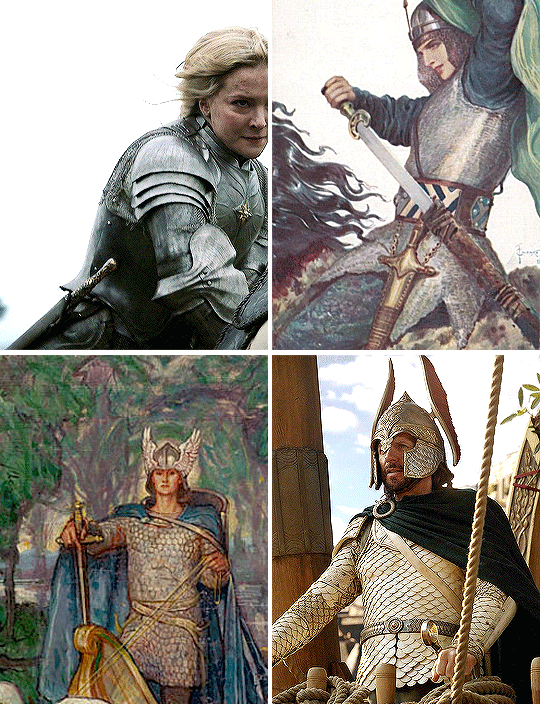

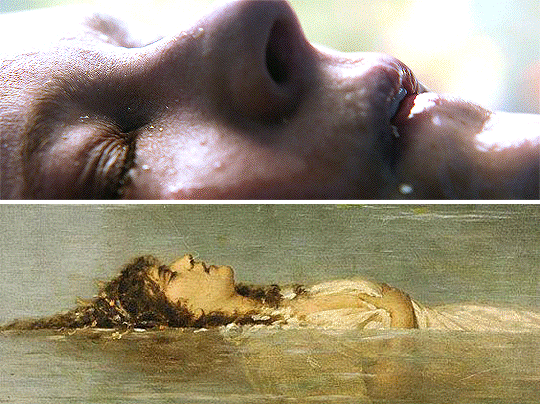



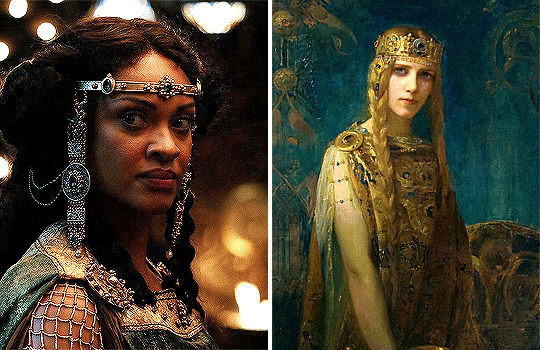
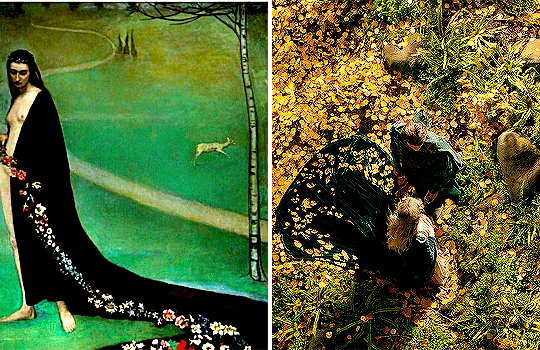

LORD OF THE RINGS + Art references
Albert Lynch - Jeanne d'Arc, 1903
Sergey Solomko | Nastasya Korolevichna ( Настасья Королевична)
VIOLET OAKLEY - Lohengrin, Knight of the Swan book cover, c. 1910.
Dante Gabriel Rossetti | The Day Dream (1880)
Theodor von der Beek | Ophelia , 1901
Herbert G Schmalz | - Zenobia's last look on Palmyra, 1888
Leon Francois Comerre | Girl with a Golden Wreath
Thomas Cooper Gotch | Destiny
Gaston Bussière | Femme à la couronne: la princesse Celte , 1911
Romaine Brooks | Femme Avec des Fleurs, 1912.
Elisabeth Louise Vigée-LeBrun | Portrait of Theresia, Countess Kinsky, 1793
Eleanor Fortescue-Brickdale | The Lover's World, 1905
#idk what this is whatever#the rings of power#tropedit#trop#ropedit#rings of power#tusersahar#hope you don't mind being tagged#gifs#*
2K notes
·
View notes
Text






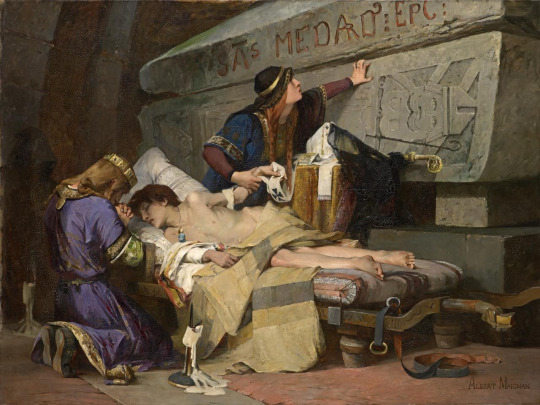
There's something truly magical about late 19th century history paintings.
It's the last gasp of the French Academic style, but instead of lots of drapery and allegory, they are taking cues from the rising tide of archaeological research and forward-looking school of narrative illustration, which adds up to the first real attempts to depict the past as best they it could be imagined. These paintings have more in common with the old-(ish) National Geographic illustrations of life in ancient Knossos than they do with their contemporaries in the Pre-Raphaelite movement.
From top to bottom-
"Cardinal Richelieu at the Siege of La Rochelle," by Henri-Paul Motte (1881)- depicts the siege by the forces of Louis XIII of France, lead by Cardinal Richelieu, against the Huguenots in the port of La Rochelle, 1627-1628
"Bringing Home the Body of King Karl XII of Sweden," by Gustaf Cederstrom (1884)- depicts the route of the Swedish army following a failed invasion of Norway that ended with the death of King Karl XII, 1718
"Zenobia's Last Look on Palmyra," by Herbert Schmalz (1888)- depicts the Palmyrene Queen Septimia Zenobia in the moments before leaving her besieged capitol, having been captured by the forces of the Roman emperor Aureliuan, 272 AD
"Reply of the Zaporozhian Cossacks to Sultan Mehmed," by Ilya Repin (1880s)- depicts the supposedly historical story of the Cossacks sending an insulting reply to an ultimatum from the Sultan of the Ottoman Empire, Mehmed IV, 1676
"The Execution of Lady Jane Grey," by Paul Delaroche (1833)- depicts the execution of the teenaged Lady Jane Grey, who had been elevated to the throne of England and Ireland for (approx) nine days in July of 1553. Her execution was at the Tower of London in February, 1554
"The Cadaver Synod" by Jean-Paul Laurens (1870)- depicts the posthumous trial of Pope Formosus by his eventual successor Pope Stephen VI ten months after Formosus' death, 897
"Chlodobert's Last Moments" by Albert Maignan (1880)- depicts the death of the Merovingian Prince Chlodebert, son of Chilperic I, before the tomb of Saint Medard, where the prince had been brought in the hope of a miracle, 580
516 notes
·
View notes
Text
Zenobia of Palmyra, the first named Arab Queen, deserves a mention also:
Zenobia of Palmyra, of course, can't be skipped in Women's History Month either. Like the Kahina she is included in Roman/European history and not in a broader Arab or Amazigh history because these people in life saw themselves this way. Zenobia was, also, the first major figure in the Roman Empire to rule by herself as a woman since Cleopatra VII and carved out the first Arab state that was self-governing, not merely a satellite state like the Ghassanid and Lakhmanid kingdoms.
She is also one of the secular figures seized on by Syrian nationalism as a hero of the Syrian state and one of the few figures of the 'Time of Ignorance' considered acceptable in Islamic Syria.
#lightdancer comments on history#women's history month#the arab world and women's history#ancient rome and women's history#zenobia of palmyra
0 notes
Text

Queen Zenobia before Emperor Aurelian by Giovanni Battista Tiepolo
#aurelian#emperor#zenobia#queen#art#giovanni battista tiepolo#ancient rome#roman empire#roman emperor#history#antiquity#rome#roman#emperor aurelian#queen zenobia#syria#syrian#palmyra#spqr#europe#european#asia#empire#triumph#lucius domitius aurelianus#palmyrene#dominus et deus#restitutor orbis#aurelianus#romans
54 notes
·
View notes
Text
Ancient Palmyra's burial customs have left behind a legacy of intricate busts, exquisitely carved from limestone. These lifelike sculptures capture the essence of Palmyra's multicultural society that once flourished along the Silk Road.
#Palmyra#statues#Syria#Roman art#Roman Architecture & Engineering#Zenobia#ancient#history#ancient origins
23 notes
·
View notes